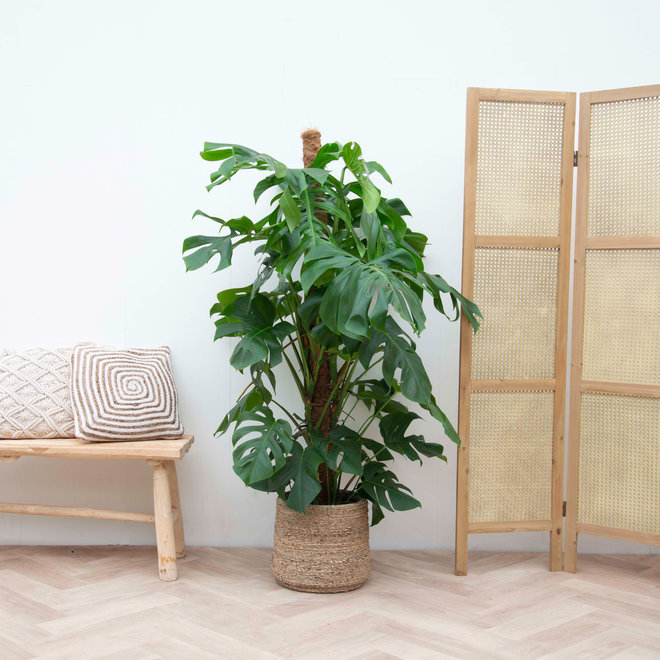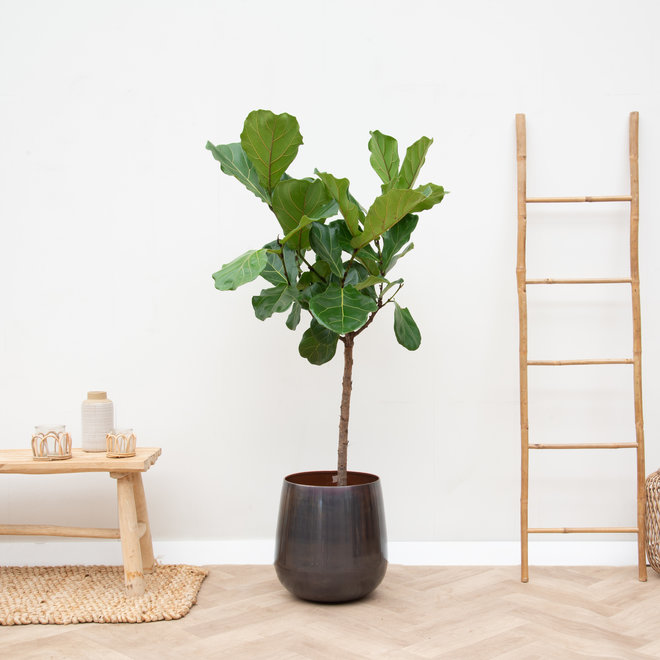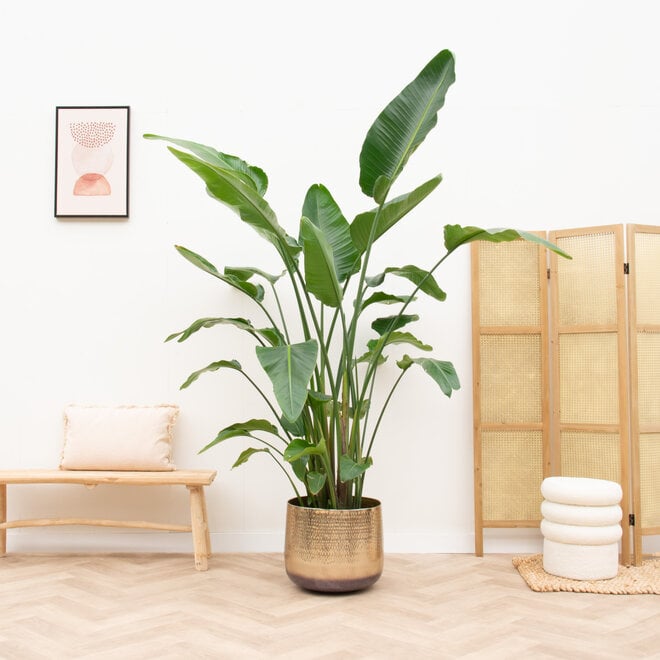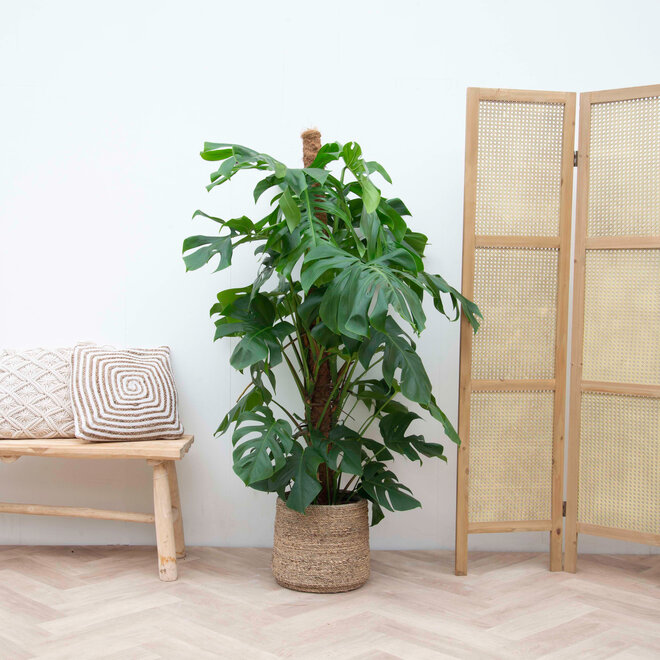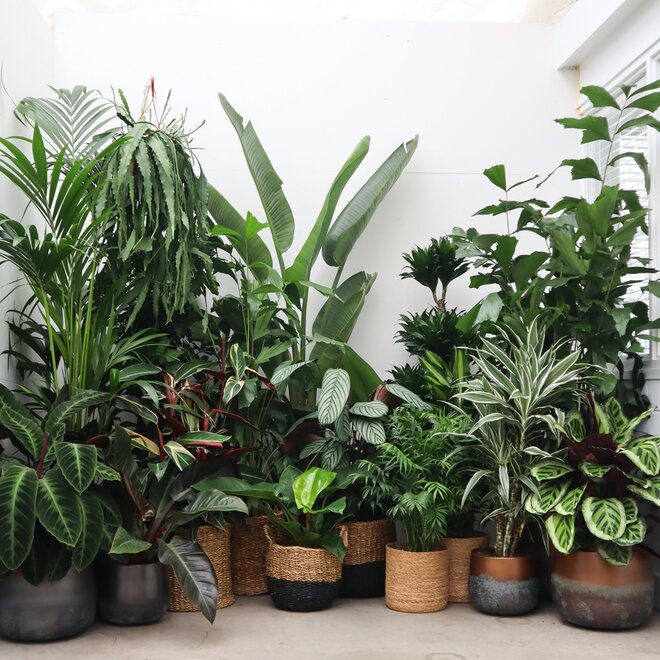Tropical houseplants
Would you like to brighten up your (living) room with a real eye-catcher? Then tropical houseplants are perfect for you.
- This product cannot be shipped to your chosen country. Still interested in the plant? Contact the personal plantshopper#1# 170 cm #2# 27 cm
Strelitzia Nicolai - 170cm
79,95 59,95
- This product cannot be shipped to your chosen country. Still interested in the plant? Contact the personal plantshopper#1# 150 cm #2# 27 cm
Monstera Deliciosa XXL - 150cm
79,95 64,95
- This product cannot be shipped to your chosen country. Still interested in the plant? Contact the personal plantshopper#1# 225 cm #2# 35cm
Strelitzia Nicolai XL - 225cm
179,95 129,95
- This product cannot be shipped to your chosen country. Still interested in the plant? Contact the personal plantshopper#1# 100 cm #2# 21cm
Bananenplant (Musa) - 100cm
29,95 19,95
- This product cannot be shipped to your chosen country. Still interested in the plant? Contact the personal plantshopper#1# 160 cm #2# 26 cm
Ficus Lyrata stam - 160cm
139,95 119,95
- This product cannot be shipped to your chosen country. Still interested in the plant? Contact the personal plantshopper#1# 210 cm #2# 45cm
Ficus Lyrata tree XXL - 210cm
269,95
- This product cannot be shipped to your chosen country. Still interested in the plant? Contact the personal plantshopper#1# 130 cm #2# 24 cm
Ficus Lyrata stem - 130cm
99,95 74,95
- This product cannot be shipped to your chosen country. Still interested in the plant? Contact the personal plantshopper#1# 250 cm #2# 50cm
Strelitzia Nicolai XXL - 250cm
239,95 189,95
- This product cannot be shipped to your chosen country. Still interested in the plant? Contact the personal plantshopper#1# 180 cm #2# 30cm
Strelitzia Augusta - 180cm
114,95 99,95
- This product cannot be shipped to your chosen country. Still interested in the plant? Contact the personal plantshopper#1# 250 cm #2# 27 - 50 cm
Strelitzia Nicolai de luxe XXL - 250cm
299,95 199,95
- This product cannot be shipped to your chosen country. Still interested in the plant? Contact the personal plantshopper#1# 160 cm #2# 30cm
Bananenplant XL - 160cm
99,95 79,95
- This product cannot be shipped to your chosen country. Still interested in the plant? Contact the personal plantshopper#1# 80 cm #2# 21cm
Bananenplant (Musa) - 80 cm
19,95
- This product cannot be shipped to your chosen country. Still interested in the plant? Contact the personal plantshopper#1# 170 cm #2# 40 cm
Monstera Deliciosa XXL - 170cm
149,95
- This product cannot be shipped to your chosen country. Still interested in the plant? Contact the personal plantshopper#1# 210 cm #2# 30cm
Strelitzia Augusta - 210cm
159,95 109,95
- This product cannot be shipped to your chosen country. Still interested in the plant? Contact the personal plantshopper#1# 220 cm #2# 40 cm
Ficus Benjamina bush branched - 210cm
199,95
- This product cannot be shipped to your chosen country. Still interested in the plant? Contact the personal plantshopper#1# 140 cm #2# 24 cm
Ficus Elastica Robusta on stem - 140cm
149,95 99,95
- This product cannot be shipped to your chosen country. Still interested in the plant? Contact the personal plantshopper#1# 120 cm #2# 21 cm
Banana plant (Musa) - 120cm
49,95 39,95
- This product cannot be shipped to your chosen country. Still interested in the plant? Contact the personal plantshopper#1# 200 cm #2# 30cm
Banana plant (Musa) - 200cm
179,95
- This product cannot be shipped to your chosen country. Still interested in the plant? Contact the personal plantshopper#1# 140cm #2# 30cm
Licuala Grandis - 140cm
179,95
- This product cannot be shipped to your chosen country. Still interested in the plant? Contact the personal plantshopper#1# 200cm #2# 27 - 40cm
Strelitzia Augusta multi stam - 200cm
169,95 149,95
- This product cannot be shipped to your chosen country. Still interested in the plant? Contact the personal plantshopper#1# 180cm #2# 27cm
Strelitzia Augusta multi stam - 180cm
99,95
- This product cannot be shipped to your chosen country. Still interested in the plant? Contact the personal plantshopper#1# 120 cm #2# 27 cm
Polyscias Ming branched - 120cm
79,95
- This product cannot be shipped to your chosen country. Still interested in the plant? Contact the personal plantshopper#1# 140 cm #2# 27 cm
Banana plant (Musa) - 140cm
59,95
- This product cannot be shipped to your chosen country. Still interested in the plant? Contact the personal plantshopper
Surprise package L - 5 plants
119,95



